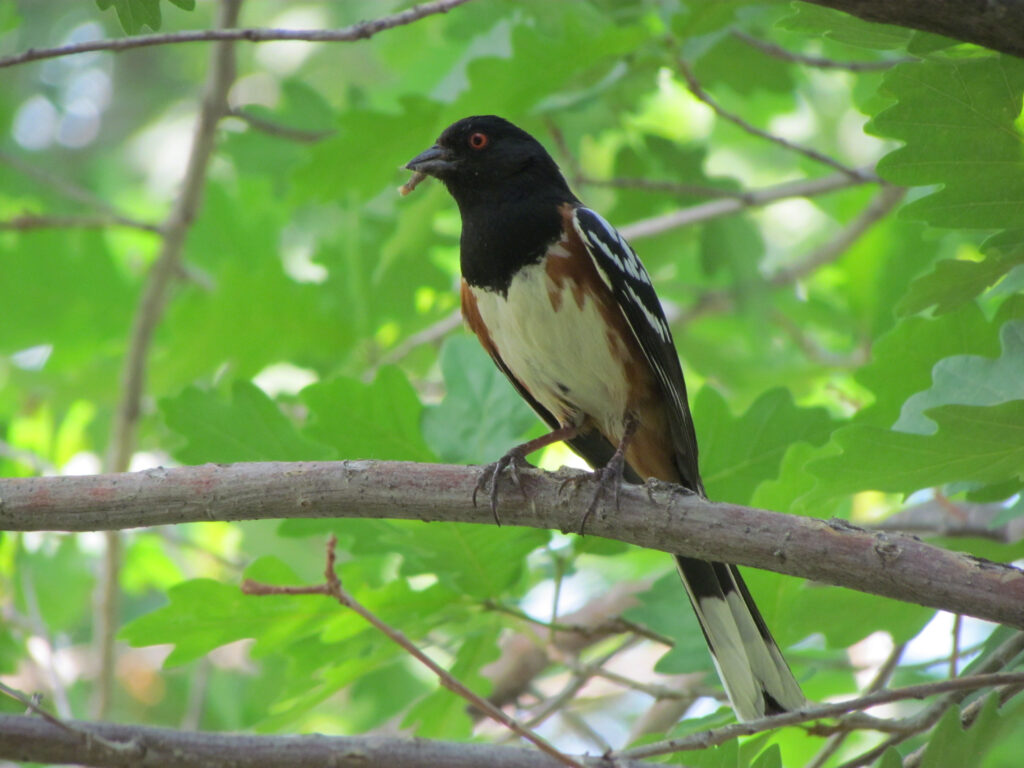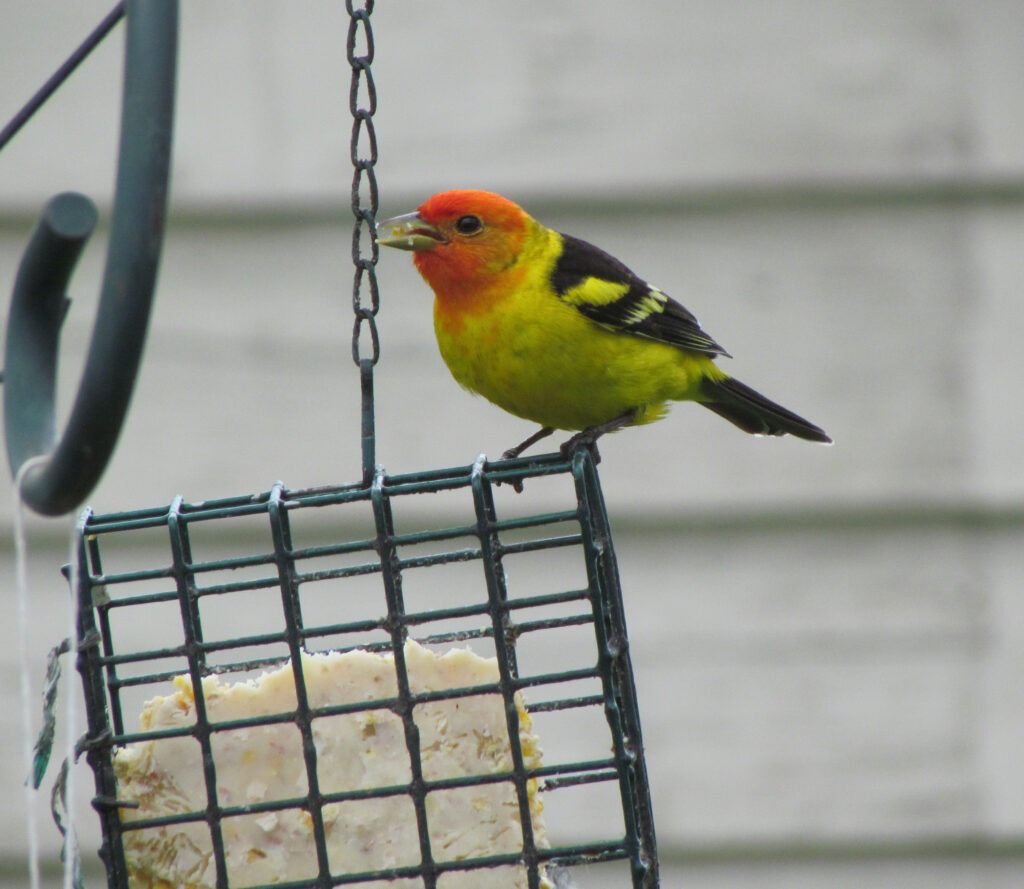Native Plants Invite Birds to Your Garden
- 2024-01-05
- By mkirk
- Posted in Horticulture, The Garden Buzz
By Carol Gilmore, Colorado Master Gardener
Did you know that February is National Bird Feeding month? The proclamation was read in Congress on February 23, 1994 and the month was designated because February is one of the most difficult months for birds to survive. Offering food, water and shelter is a great way to aid native birds through the difficulties of winter and enjoy birdwatching in your own backyard.
Bird feeders, bird houses and bird baths are one way you can help out your favorite wild birds. Planting native plants in your yard is another way. Plants and birds evolved together in the environment, so native plants are better adapted as a source of food and shelter. Native plants like Gambel Oak and chokecherry provide homes for up to 261 different insect species, in addition to providing food for birds.

Native plants are better adapted to the Colorado environment and don’t require as much care once established in the landscape. It’s important to consider the needs of the birds you want to host. Consider the type of habitat that is helpful to bird survival. While birds need trees to escape predators, shrubs are another important consideration. Thorny shrubs can help protect birds from marauding cats and other predators, as well as provide a pathway between the upper tree story and the blooming plants, grasses and soil area where seedheads and decomposing plant material offer birds an excellent smorgasbord.

The Spotted Towhee, a common breeding bird in the Colorado Front Range and mountains, forages on the ground and in shrubs and low trees for berries, seeds and insects, depending on the season. They build their nests on the ground or in low trees or shrubs no higher than five feet off the ground.
The Western Tanager’s diet consists primarily of insects, but also includes berries and fruit. Here it is seen feeding on suet in an Arapahoe County backyard before migrating to the open conifer or mixed forests in which they build their nests.
Here are some examples of native shrubs that help support birds. CSU Extension has a number of Fact Sheets and other information on Native Plants for Colorado.
Horticulture Resources
- Garden Buzz Archives
- CSU Extension Resources
- Colorado Master Gardener Program
- Foothills to Plains Native Plant Master Program
- Native Bee Watch Community Science Program
- The Co-Hort Blog
- PlantTalk Colorado
- Soil Testing
- Plant Select
- Emerald Ash Borer
- Japanese Beetle
- Colorado State Forest Service
- Ask an Expert


